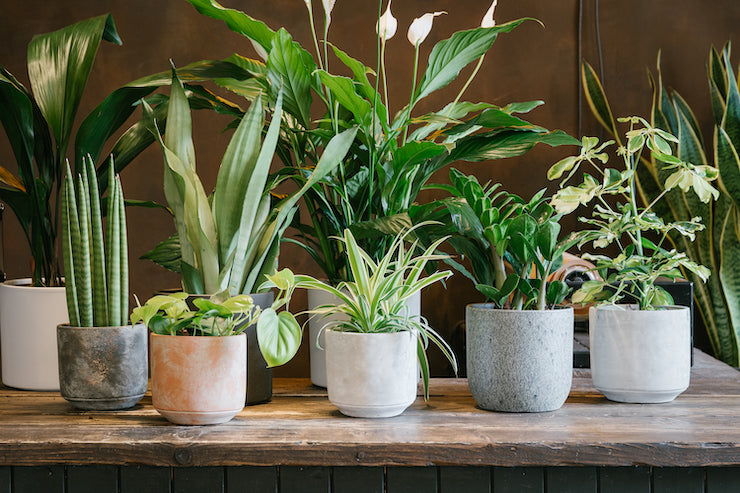
Care for Palms Indoors in the UK
Care for Palms Indoors in the UK
A popular choice with the Victorians, the majority of Palms are members of the Arecaceae family and can be found in tropical and subtropical environments across the world. They are favoured for their elegant, splayed fronds alongside their easy care and shade tolerant nature. The perfect statement plant for a shady corner!
The most recognised varieties are the Dypsis lutescens (commonly known as Areca Palms), Chamaedorea elegans (known as the Parlour Palm) and Howea foresteriana (Commonly called a Kentia Palm). These palms have feathery leaf shapes and bushy growing habits which will add instant jungle vibes to your home. There are over 2,000 species of palms so look out for the more unusual leaf shapes of the Caryota mitis which gains its common name the ‘Fishtail Palm’ for its leaves resembling fish fins. Another notable palm variety is the Livistona rotundifolia (Footstool Palm) which has large paddle shaped leaves with zig zagged edging which are adorned upon spiked stems.
Caring for Palms in your UK Home
Palms are a versatile option when it comes to light requirements as they will thrive if positioned in bright, indirect light but can also tolerate lower light levels so will happily survive in a shadier spot. Allow the top inch of compost to dry out between waterings before fully saturating the compost again. Palms naturally live in areas with high humidity and should be misted frequently throughout the week with water from a spray bottle. During the growing season in the spring and summer, these plants should be fed with a general houseplant feed. Our top pick is Liquid Gold Leaf for a high-quality feed option. If you are on a budget, Houseplant Focus can also be used to feed your palms. During the growing season, it is important to check if your plant needs repotting. If the roots are growing out of the base of the pot, or if the roots are densely spiralling at the base of the compost, it is time to repot. When repotting, choose a pot with a drainage hole and no larger than 5cm bigger than the plant's current pot. Palms require a general houseplant compost like Houseplant Focus, however as this is a basic mix we recommend adding 20% perlite to 80% compost for added drainage and aeration. For a more specialised Palm compost mix 60% soil.ninja Base Mix with 20% bark and 20% sand.
Tips and Tricks for Palm
Why does my palm have brown, crispy leaves?
Brown, crispy leaves on palms can appear for several reasons. Usually, this is down to a lack of humidity and can be prevented by upping your misting throughout the week. Placing your Palm too close to a heat source such as a radiator or fireplace can also cause the fronds to dry out so reposition the plant and again up your misting! Finally, crisp leaves form if the plant is sitting in direct light. This happens as the sun rays magnify through the glass window and cause scorching on the leaves. Unfortunately, damaged leaves will not turn green again so remove these with clean, sharp scissors.
Why are the leaves on my palm yellowing?
Yellowing leaves form as a result of under or over watering. Make sure to allow the top inch of compost to dry out between waterings and ensure to remove the plant from any decorative pots when watering to allow any excess water to fully drain. Yellowing can also occur if the plant has run out of nutrients or growing space so ensure to feed during the growing season and look out for signs the plant needs to be repotted.
We hope you enjoyed learning more about Palms here on our Blog. Check out our Large & Tall Plant section to discover what big plants we have in stock right now!



